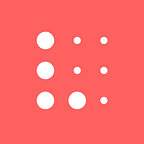Lingo Team Talks: Erika Kim, Content Manager
We use Lingo every single day — and it’s not just because we made it. For every task ranging from asset organization to community moderation at The Noun Project, Lingo is our weapon of choice.
Today, we’re kicking off a series of team interviews that we think do a great job of illustrating the straight-up usefulness of the Lingo app. First up: Erika Kim, Content Manager.
Erika, get us started! What do you do at Noun Project/Lingo?
My official title is Content Manager at Noun Project, and my responsibilities include moderating and managing the icons that get submitted.
How do you use Lingo?
Broadly, Lingo helps me organize, categorize, and define icon issues, track plagiarism accounts and/or content, as well as keep informative screenshots at the ready to help direct users while troubleshooting issues.
My use case is kind of specific. I’m not a graphic designer, but what I do is a very visual job. Lingo helps me with my workflow. That’s mainly because moderation has grown as Noun Project has become more popular. The volume of icon submissions has grown exponentially, and as a result it’s more complex to maintain the community, approve icons, keep an eye out for plagiarism, communicate with my team, and help users with customer support in a timely fashion.
Lingo helps me organize, identify, archive, and collectively review all of these actions and points of interest. It helps me maintain consistency and makes maintaining a process really simple.
Why Lingo over other means of organizing imagery?
When you’re organizing things in folders, you can’t see the full folder tree and the content that’s inside simultaneously. Having both visible on Lingo makes it so much easier to deal dynamically with visuals. On the other hand, if we were chatting about visual assets on Gchat or Slack, it would be subject to temporality and conversational/text clutter. With Lingo, you can consolidate the pertinent visual information and maintain a really intentional order and organizational scheme.
Any Lingo best practices or tips/tricks?
The tool is pretty flexible, but try and make sure you know how you want to organize your content beforehand. Figure out your organization and hierarchy system before you get going.
Also, the screenshot feature is really useful and can be streamlined depending on what you want. In preferences, you can choose to have Lingo detect all screenshots on your desktop. Every time a screenshot is taken and added to desktop, a pop up notification in the top right (assuming your “Do Not Disturb” setting is off) will prompt you to import the screenshot to Lingo. If your assets are frequently going to different Groups, you can choose to be prompted each time to have control and flexibility about where it ends up. On the other hand, if all of your screenshots tend to go into one Group, you can set that in Preferences and all screenshots will automatically be sent to that Group. You also have the option to have the original screenshot be deleted from your desktop automatically, which helps streamline workflow while keeping your desktop free of clutter!
What is your favorite icon or icon collection on The Noun Project?
My favorite icon, without over-thinking it, is:
As for collections, I love these two:
There are so many and they’re all different, it’s hard to pick!
If you enjoyed reading this article, give it some❤️ .
Lingo is the cloud connected visual asset library that empowers creation and ensures visual consistency for entire teams.
